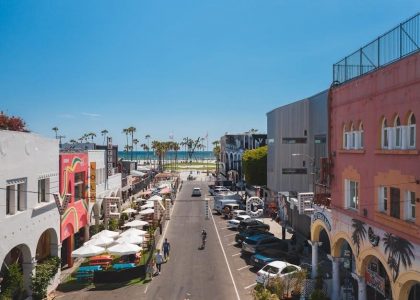Overview of Transoceanic Interconnections
The overview of transoceanic interconnections involves understanding the complex networks of trade, cultural exchange, and geographical discoveries that took place from 1450 to 1750. This period saw the rise of European maritime powers, the establishment of new trade routes, and the exchange of goods, ideas, and technologies across the globe. The transoceanic interconnections had a profound impact on the social, economic, and cultural development of various regions and civilizations. The study of these interconnections requires an analysis of the historical context, the role of key players, and the consequences of these interactions. By examining the overview of transoceanic interconnections, students can gain a deeper understanding of the complexities of global history and the ways in which different regions and cultures have shaped each other over time. This knowledge is essential for understanding the modern world and its many interconnected systems and relationships.
Technological Innovations from 1450 to 1750
New technologies emerged from 1450 to 1750, including navigation tools and shipbuilding techniques that facilitated exploration and trade across oceans and continents effectively online always.
Impact of Technological Innovations on Trade and Travel
The impact of technological innovations on trade and travel was significant, as new navigation tools and shipbuilding techniques enabled faster and more efficient travel across oceans.
This led to an increase in trade between different regions and cultures, with the exchange of goods, ideas, and technologies.
The effects of these innovations can be seen in the growth of global trade networks and the emergence of new economic powers.
As trade and travel increased, so did the exchange of cultures, ideas, and technologies, leading to a more interconnected world.
The impact of technological innovations on trade and travel during this period was profound, shaping the course of global history and laying the foundation for modern globalization.
Overall, the impact of technological innovations on trade and travel was a key factor in the development of a more interconnected world.
Economic Developments and Social Structures
Economic developments influenced social structures and cultural exchange between different regions and civilizations effectively online every day.
Effects of Economic Developments on Social Structures
The effects of economic developments on social structures were significant, leading to changes in class systems, family structures, and cultural norms. As trade and commerce increased, new social classes emerged, and existing ones were altered. The growth of cities and the development of new industries also led to changes in family structures and social relationships. Furthermore, the increased exchange of goods and ideas led to the diffusion of cultural practices and values, shaping the social structures of different regions. The impact of economic developments on social structures was complex and far-reaching, influencing the daily lives of people in various parts of the world. Overall, the effects of economic developments on social structures were a key aspect of the transoceanic interconnections that characterized this period in history, with lasting impacts on social and cultural norms. New social systems emerged as a result.
European Maritime Exploration and Geopolitical Influence
European maritime exploration led to significant geopolitical influence and control over new trade routes and regions effectively established online during this period in history daily.
Learning Objectives for Unit 4
Learning objectives for Unit 4 include understanding the impact of technological innovations on trade and travel, and explaining how cross-cultural interactions resulted in the diffusion of technology. Students should be able to describe the economic causes and effects of maritime exploration by European states, and explain how economic developments and new transoceanic connections affected social structures in different parts of the world. Additionally, students should be able to analyze the differences between various European empires and their impact on global trade and politics. By mastering these learning objectives, students will gain a deeper understanding of the complex historical events and processes that shaped the world from 1450 to 1750. The learning objectives are designed to help students develop critical thinking and analytical skills, and to prepare them for further study in world history and other related fields, with online resources available.
Review of Unit 4 Transoceanic Interconnections includes key concepts and topics for final assessment and evaluation of student learning and understanding of historical events and periods effectively online always.
Key Concepts and Topics in Unit 4
Key concepts and topics in Unit 4 include the examination of transoceanic interconnections and their impact on world history from 1450 to 1750. The unit focuses on the technological innovations, economic developments, and social structures that emerged during this period. Students will explore the ways in which cross-cultural interactions resulted in the diffusion of technology and facilitated changes in patterns of trade and travel. The unit also covers the geopolitical influence of European maritime exploration and the establishment of trading-post empires. Additionally, students will analyze the differences between the trading-post empire established by the Portuguese in the Indian Ocean and the colonies they established in the New World. By mastering these key concepts and topics, students will gain a deeper understanding of the complex historical events and periods that shaped the world during this time. The unit provides a comprehensive framework for understanding the transoceanic interconnections that transformed the world.



